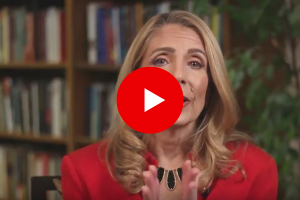Healing from Attachment Issues
 The attachment patterns we experienced as children impact us in powerful ways throughout our lives. Understanding our attachments to our parents or other influential caretakers can offer us incredible insight into why we live our lives today the way we do, and particularly, how we operate in our relationships. Our earliest relationships served as models for how we expect the world to work and how we anticipate others will behave. Without realizing it, we’re drawn to recreate these old patterns and dynamics from our past in the present. If we experienced an insecure (avoidant, ambivalent, or disorganized) attachment pattern, we are more likely to re-experience insecurity in our closest relationships, especially with romantic partners and with our own children.
The attachment patterns we experienced as children impact us in powerful ways throughout our lives. Understanding our attachments to our parents or other influential caretakers can offer us incredible insight into why we live our lives today the way we do, and particularly, how we operate in our relationships. Our earliest relationships served as models for how we expect the world to work and how we anticipate others will behave. Without realizing it, we’re drawn to recreate these old patterns and dynamics from our past in the present. If we experienced an insecure (avoidant, ambivalent, or disorganized) attachment pattern, we are more likely to re-experience insecurity in our closest relationships, especially with romantic partners and with our own children.
Many of us who experienced an insecure attachment pattern early in life will go on to unwittingly recreate strained, hurtful, or painful experiences in later relationships. Because our attachment models left us feeling insecure and insensitive to ourselves, we may not have made the best choices in terms of who we’ve selected as partners. We often select people with whom we can reenact relationship dynamics from our past or we distort or provoke them to recreate the familiar emotional climate in which we grew up.
To understand our patterns, it’s helpful to explore the different categories of attachment. For example, if our caretaker was not emotionally available and did not respond to our expression of needs, we may have developed avoidant attachment patterns. We may tend to be detached from our needs, feel shame around having needs, and think badly of people who express needs. If our adaptation is to have avoidant/dismissing attachment patterns, we tend to be pseudo-independent and are often shut down emotionally. In a relationship, we may be resistant to closeness or deny our own needs and fail to attend to the needs of our partner.
On the other hand, if we had a parent who was inconsistently responsive to our needs, we may have developed anxious attachment patterns. This type of parent responded to our needs at times but then, at other times, acted out of their own needs by being emotionally hungry toward us. We learned to aggressively convey our attachment needs, expressing distress loudly and clinging to our parents, often screaming and shouting to get their attention, yet we were left feeling empty. We may have grown into adults with preoccupied attachment and have a tendency to feel anxious, insecure, distrusting, and/or reactive in our adult relationships. In each of these cases, we can see how our early adaptations can go on to hurt or limit us both in how we treat ourselves and how we relate to others.
The good news is, as adults, it’s possible to develop earned secure attachment, a topic I go into in detail in an upcoming two-part Webinar, Helping Clients Develop Secure Attachment. Here I will outline three key ways we can start to heal from our early attachment issues.

In this Webinar: This online workshop with Dr. Lisa Firestone will provide tools to help people heal insecure attachment, resolve trauma, integrate their…
1. Create a Coherent Narrative
Attachment research tells us that to break free of a cycle of strained attachments, we must make sense of and feel the full pain of our past. As Dr. Daniel Siegel explained in his book Mindsight, “The best predictor of a child’s security of attachment is not what happened to his parents as children, but rather how his parents made sense of those childhood experiences.” That is why, in order to repair our attachment ability and develop more inner security as adults, we must be willing to create what Siegel calls a “coherent narrative” of our experience.
“It turns out that by simply asking certain kinds of autobiographical questions, we can discover how people have made sense of their past— how their minds have shaped their memories of the past to explain who they are in the present,” wrote Dr. Siegel in Mindsight. “The answers people give to these fundamental questions also reveal how this internal narrative— the story they tell themselves— may be limiting them in the present and may also be causing them to pass down to their children the same painful legacy that marred their own early days.” In other words, if we can face our history and make sense of our narrative, we can actually change the course of our lives, our relationships, and the attachment patterns we pass on to our kids.
Telling our story in a coherent way can help us resolve both “big T and little t traumas” in our lives. While people may think of trauma as something unusual or life-threatening, the truth is most of us have experienced trauma, whether it was “big T trauma,” a serious loss, abuse, or life-threatening event, or a “little t trauma,” an event which may not seem as dramatic, but impacted us by causing us distress, fear, or pain and changed the way we saw ourselves and the world around us. If we don’t make sense of our experience, we are likely to be triggered and affected by our trauma in ways of which we aren’t aware, but that cause us considerable sorrow.
2. Choose a Partner with a Healthier Attachment Style
Another approach to creating more security in our adult attachments is to get involved with someone who has a healthier attachment style than our own and remain in the relationship long-term. When we develop a secure attachment to someone who has a healthy attachment pattern, we can develop more inner security, because we are actively experiencing a new model for how relationships can work.
For example, if an intermittently available parent left us experiencing a lot of anxiety, uncertainty, or jealousy in our adult relationships, we can gain security by being with someone who is calm and consistent. If we grew up keeping to ourselves and avoiding closeness, having a partner who is secure in themselves, responsive, and attuned may allow us to be more vulnerable or trusting. Of course, many of us experienced insecure attachments and many of us will fall in love with people who’ve experienced insecurity. These situations are far from hopeless. We don’t always have to rely on someone else to meet our needs or help us heal from the past. We can do work within ourselves to develop inner security and have stronger, healthier relationships with others as a result.
3. Go to Therapy
A third and incredibly valuable avenue for developing a secure attachment is through therapy. A good therapy relationship allows a person to form a secure attachment with the therapist. Having a corrective emotional experience with someone who can consistently provide a secure base and allows us to feel and make sense of our story is a gift that can benefit us in every area of our lives.
Every one of us has endured pain in our early lives, even those of us who feel we grew up with secure attachment patterns. Every one of us has experienced ruptures in our relationships and traumas, big or small. As a result, every one of us would benefit from the process of creating a coherent narrative and forming more secure attachments, whether in an interpersonal or therapeutic relationship. Whatever our history may be, developing inner security is a process that gives us more freedom to become our true selves and experience our lives and relationships to the fullest.
Tags: adult attachment, attachment, attachment patterns, attachment style, child attachment, intimacy, love, relationship, relationship advice, relationship attachment, relationship issues, relationships, secure attachment









Great interest in yor publications.
They are a source of knowledge to my field and academic work.
It s a source of knowledge to my daily work
Many thanks
I came here because I am experiencing trauma following a rejection after a second date and being a 48 year old male I am desperate to repair and improve myself so that I can find companionship after spending most of my adult life alone. I am an American living in Russia and I am broke. This article is one of the most worthless I have read.
1) What are the fundamental questions one must answer to create a coherent narrative? You make no attempt to provide any real depth here or anything useful.
2) Oh great, let me head to the market and pick one right out. How many people do you know without attachment issues that are interested in dating people with them? You are completely detached from reality.
3) Great advice for people with money and access.
What is the point of this article?